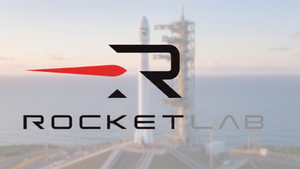
A stock with low volatility can be reassuring, but it doesn’t always mean strong long-term performance. Investors who prioritize stability may miss out on higher-reward opportunities elsewhere.
Finding the right balance between safety and returns isn’t easy, which is why StockStory is here to help. That said, here are three low-volatility stocks to steer clear of and a few better alternatives.
Matson (MATX)
Rolling One-Year Beta: 0.81
Founded by a Swedish orphan, Matson (NYSE: MATX) is a provider of ocean transportation and logistics services.
Why Are We Wary of MATX?
- Products and services are facing significant end-market challenges during this cycle as sales have declined by 5.3% annually over the last two years
- Falling earnings per share over the last two years has some investors worried as stock prices ultimately follow EPS over the long term
- Shrinking returns on capital suggest that increasing competition is eating into the company’s profitability
Matson’s stock price of $113.43 implies a valuation ratio of 11.4x forward P/E. Check out our free in-depth research report to learn more about why MATX doesn’t pass our bar.
Tilray (TLRY)
Rolling One-Year Beta: 0.59
Founded in 2013, Tilray Brands (NASDAQ: TLRY) engages in cannabis research, cultivation, and distribution, offering a range of medical and recreational cannabis products, hemp-based foods, and alcoholic beverages.
Why Is TLRY Risky?
- Costs have risen faster than its revenue over the last year, causing its operating margin to decline by 70.1 percentage points
- Earnings per share fell by 60.5% annually over the last three years while its revenue grew, showing its incremental sales were much less profitable
- Cash burn has widened over the last year, making us question whether it can reliably generate shareholder value
Tilray is trading at $0.40 per share, or 5.1x forward EV-to-EBITDA. If you’re considering TLRY for your portfolio, see our FREE research report to learn more.
IMAX (IMAX)
Rolling One-Year Beta: 0.15
Originally developed for World Expo '67 in Montreal as an innovative projection system, IMAX (NYSE: IMAX) provides proprietary large-format cinema technology and systems that deliver immersive movie experiences with enhanced image quality and sound.
Why Does IMAX Give Us Pause?
- Sales stagnated over the last five years and signal the need for new growth strategies
- Cash-burning tendencies make us wonder if it can sustainably generate shareholder value
- Negative returns on capital show that some of its growth strategies have backfired
At $27.93 per share, IMAX trades at 22.3x forward P/E. Dive into our free research report to see why there are better opportunities than IMAX.
High-Quality Stocks for All Market Conditions
The market surged in 2024 and reached record highs after Donald Trump’s presidential victory in November, but questions about new economic policies are adding much uncertainty for 2025.
While the crowd speculates what might happen next, we’re homing in on the companies that can succeed regardless of the political or macroeconomic environment. Put yourself in the driver’s seat and build a durable portfolio by checking out our Top 6 Stocks for this week. This is a curated list of our High Quality stocks that have generated a market-beating return of 183% over the last five years (as of March 31st 2025).
Stocks that made our list in 2020 include now familiar names such as Nvidia (+1,545% between March 2020 and March 2025) as well as under-the-radar businesses like the once-small-cap company Exlservice (+354% five-year return). Find your next big winner with StockStory today for free.




